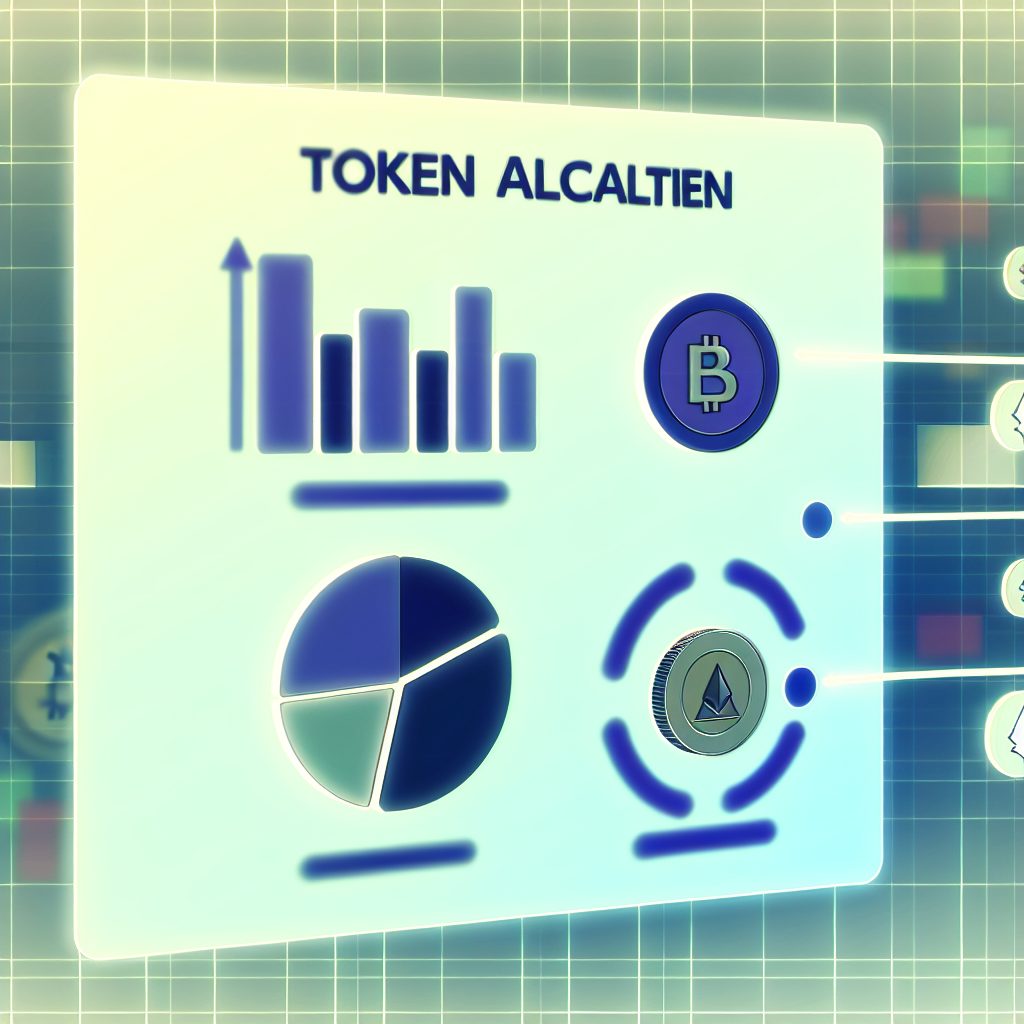Understanding Token Allocation Charts in the Cryptocurrency Industry
The cryptocurrency landscape is vast and complex, with various elements that contribute to the success and sustainability of digital assets. One of the critical components that investors and enthusiasts must understand is the concept of token allocation charts. These charts provide a visual representation of how tokens are distributed among different stakeholders, which can significantly impact a project’s future. In this article, we will delve into what token allocation charts are, their importance, how to read them, and their implications for investors.
What Are Token Allocation Charts?
Token allocation charts are graphical representations that illustrate how a cryptocurrency’s total supply is distributed among various categories. These categories typically include:
- Founders and Team: Tokens allocated to the project’s founders, developers, and team members.
- Investors: Tokens sold to early investors, venture capitalists, or through Initial Coin Offerings (ICOs).
- Advisors: Tokens given to advisors who provide strategic guidance.
- Community and Ecosystem: Tokens reserved for community incentives, rewards, or partnerships.
- Reserves: Tokens held for future use or to stabilize the token’s value.
Understanding these allocations is crucial for assessing a project’s potential for growth and sustainability. A well-structured token allocation can indicate a project’s commitment to its community and long-term vision.
The Importance of Token Allocation Charts
Token allocation charts serve several essential functions in the cryptocurrency ecosystem:
- Transparency: They provide transparency regarding how tokens are distributed, which can help build trust among investors.
- Investment Decisions: Investors can make informed decisions based on the allocation of tokens, assessing whether a project is likely to succeed or fail.
- Market Dynamics: Understanding token distribution can help predict market behavior, as large allocations to founders or investors may lead to sell-offs.
- Community Engagement: Projects that allocate a significant portion of tokens to the community often foster greater engagement and loyalty.
How to Read Token Allocation Charts
Reading a token allocation chart may seem daunting at first, but it becomes straightforward with a little practice. Here are the key elements to focus on:
- Percentage Distribution: Most charts will show the percentage of total supply allocated to each category. This helps you quickly gauge the project’s priorities.
- Time Locking: Some projects implement vesting schedules for team and advisor tokens. Understanding these schedules is crucial, as they can prevent sudden sell-offs.
- Use Cases: Look for notes or legends that explain the purpose of each allocation. This context can provide insights into the project’s strategy.
For example, a project that allocates a large percentage of tokens to community rewards may be more focused on user engagement than one that allocates most tokens to founders and investors.

Case Studies of Token Allocation Charts
To illustrate the significance of token allocation charts, let’s examine a few notable projects:
Ethereum (ETH)
Ethereum’s initial token distribution was designed to fund the development of the platform. The allocation was as follows:
- Founders and Team: 9% of total supply
- Investors: 60% through the ICO
- Community and Ecosystem: 30% for future development and community incentives
This allocation has contributed to Ethereum’s growth as a leading smart contract platform, emphasizing community involvement and long-term development.
Binance Coin (BNB)
Binance Coin’s allocation chart reflects a different strategy:
- Founders and Team: 40% of total supply
- Investors: 10% through private sales
- Community and Ecosystem: 50% for user incentives and exchange-related activities
Binance’s focus on community and user engagement has helped it become one of the largest cryptocurrency exchanges globally.
Token Allocation and Market Behavior
The distribution of tokens can significantly influence market behavior. Here are some ways in which token allocation impacts the market:
- Price Volatility: Large allocations to founders or early investors can lead to price volatility if they decide to sell their tokens.
- Market Sentiment: A well-balanced allocation can foster positive market sentiment, while a skewed distribution may lead to skepticism.
- Long-term Stability: Projects that implement vesting schedules for team tokens often experience more stable price movements.
Common Misconceptions About Token Allocation Charts
Despite their importance, several misconceptions surround token allocation charts:
- All Projects Are the Same: Not all token allocations are created equal. Each project has unique goals and strategies that influence its distribution.
- High Team Allocation Is Bad: While a high allocation to the team can raise concerns, it may also indicate a strong commitment to the project’s success.
- Token Allocation Is Static: Token allocations can change over time due to community votes, governance decisions, or project evolution.
FAQs About Token Allocation Charts
What is the purpose of a token allocation chart?
The purpose of a token allocation chart is to provide a visual representation of how a cryptocurrency’s total supply is distributed among various stakeholders, helping investors assess the project’s potential.
How can I find a token allocation chart for a specific cryptocurrency?
You can typically find token allocation charts on the official website of the cryptocurrency project, in their whitepaper, or on cryptocurrency data aggregators like CoinGecko and CoinMarketCap.
Why is token allocation important for investors?
Token allocation is crucial for investors as it provides insights into the project’s priorities, potential for growth, and market behavior, allowing for more informed investment decisions.
Can token allocations change over time?
Yes, token allocations can change due to community votes, governance decisions, or project evolution, making it essential for investors to stay updated on any changes.
Conclusion
Token allocation charts are vital tools in the cryptocurrency industry, offering insights into how tokens are distributed among various stakeholders. Understanding these charts can empower investors to make informed decisions, assess market dynamics, and gauge a project’s long-term viability. As the cryptocurrency landscape continues to evolve, staying informed about token allocations will remain crucial for anyone involved in this exciting space.
For the latest updates on cryptocurrency news and price tracking, consider visiting Bitrabo. You can also follow me on social media for more insights: X, Instagram, and Threads.
Disclaimer: This article is for informational purposes only and should not be considered financial advice. Always conduct your research before investing in cryptocurrencies.
The Crypto Watchlist of the Week 🔎
Subscribe to receive expert-curated projects with real potential—plus trends, risks, and insights that matter. Get handpicked crypto projects, deep analysis & market updates delivered to you.


